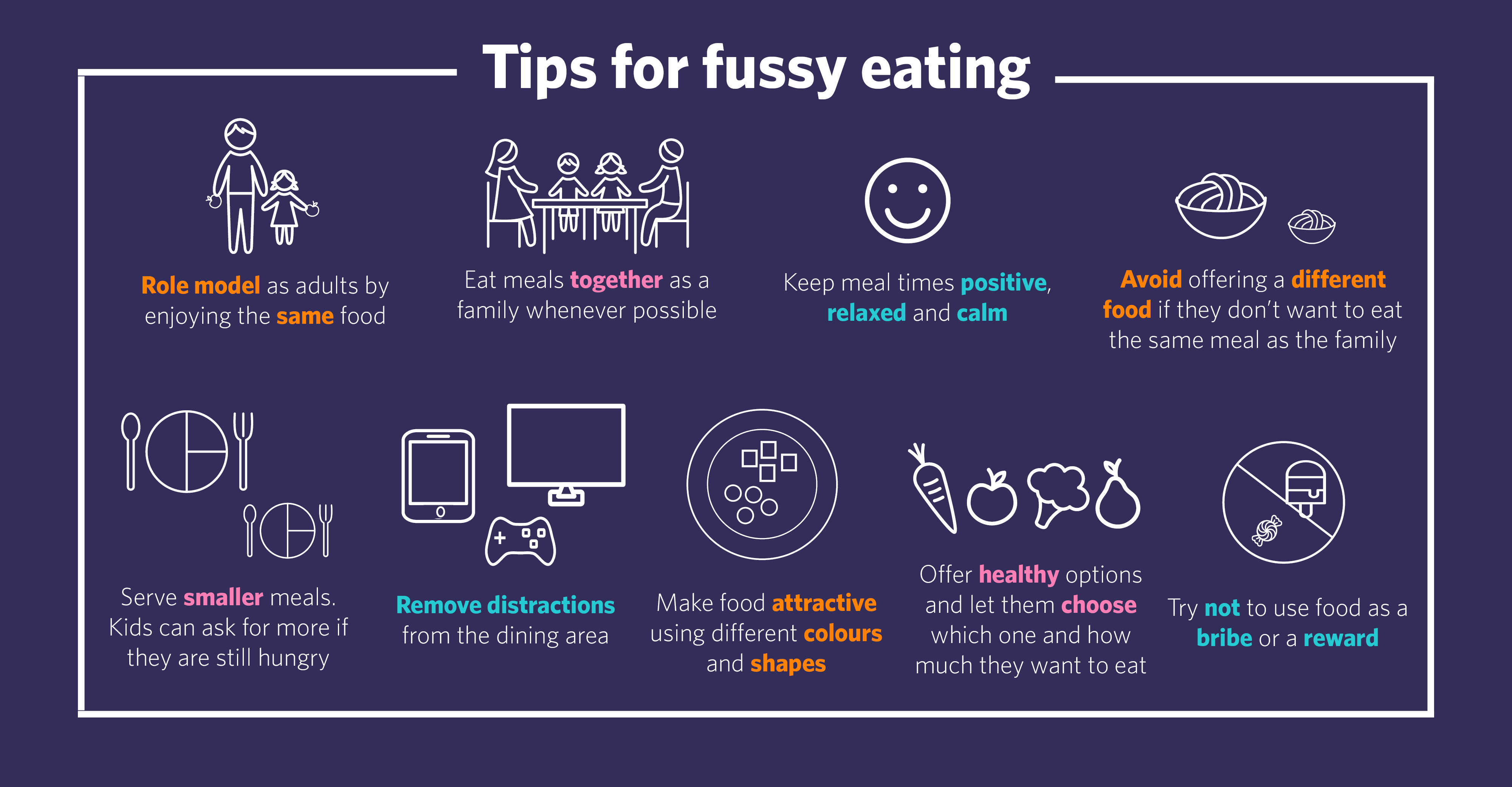
Tips for Fussy Eaters
Having a fussy eater can be stressful when it comes to mealtimes but it is very common during childhood. Many parents go through similar situations when trying to get their kids to try something new.
Try these ideas to create a successful, supportive environment for trying new food.
-
Respect your child’s appetite
-
Try not to force kids to eat. This might lead to a struggle anytime they see that food again
-
To avoid overwhelming your child, serve smaller portions. They can ask for more if they are still hungry and less food is wasted
-
Milk and juice can fill up kid’s small tummies quickly. Limit these throughout the day and offer water instead.
-
Make a routine
-
Offer meals and snacks around the same time each day
-
Be patient when experimenting
-
Kids can be shy when trying new foods and might not always want to try something different.
-
Some kids might need to see a food up to 15 times before they actually try it.
-
Rather than focusing on the taste, encourage them to talk about the colour, shape, smell or what it feels like in their mouth.
-
Try serving new foods alongside their favourites to encourage healthy choices.
-
Let kids feed themselves, even if it gets messy
-
Stick to the plan
-
Avoid preparing another meal if your child rejects the original meal. This can encourage picky eating behaviours.
-
If your child skips a meal or snack, wait until the next meal or snack time to offer something else
-
Encourage your child to stay at the table during mealtime, even if they don’t eat.
-
Have fun
-
Instead of just placing vegetables on the plate, cut foods (if possible) with various cookie cutters, arrange them in to form a picture, or add them to a kebab stick.
-
Serve vegetables with a favourite dip or sauce or with a variety of brightly coloured foods to encourage fun during mealtime.
-
Helping hands
-
Get your child to be more involved with their food, both at the store and at home.
-
When shopping ask them to help choose fruits and vegetables or other healthy foods
-
At home get them to help water the garden, rinse vegetables, stir or set the table.
-
Be a good role model
-
If you eat a variety of healthy foods, your child will most likely do the same
-
Keep your language positive and encouraging to promote good, healthy food experiences and memories.
-
Get creative
-
Add vegetables and fruits into your favourite meals. For example, add chopped broccoli, carrot or capsicums to your spaghetti sauce, add fruit on top of breakfast cereals, or mix grated zucchini or carrot into soups.
-
Use capsicum, zucchini, pumpkin, eggplant, cabbage or lettuce leaves as edible containers. You can fill them with fried rice, low fat cheese, hummus or other dips for a snack or meal.
-
Minimise distractions
-
Remove toys, TVs, games, phones, books and other distractions from mealtime.
-
This will help them to focus on eating and become familiar with signs that they are full
-
Some TV commercials also encourage sugary and less nutritious foods, which can cause problems at mealtime
-
Use non-food-based rewards
-
Avoid food as a reward (for example, avoid saying ‘eat your vegetables and you will get dessert’). This can send the wrong message that vegetables are not enjoyable and increase the desire for sweets
-
Praise your kids for trying, even if it is just a touch, lick or smell
-
Reward them with extra playtime, stickers or a reward chart

Related Topics

Play is important for building strength and skills. Unstructured play allows your child to us their imagination.

